The Industridoktorn laboratory is equipped with many advanced instruments for research and analyses in chemistry and microbiology. Read more about our analysis equipment here.
Spektroscopy
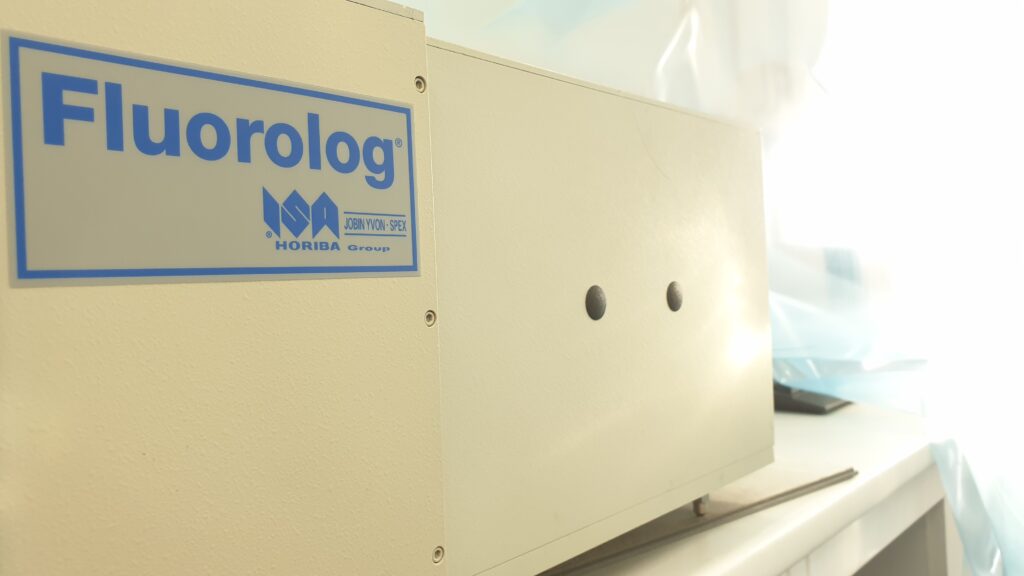
Spectrofluorometer – Flurorolog tau-3 (lifetime & steady state) set up in configuration 21, which means dual gratings on both the excitation and emission side. This is the gold standard reference instrument for any serious spectroscopist and can be reconfigured to study almost any optical phenomenon including lifetime down to picoseconds!
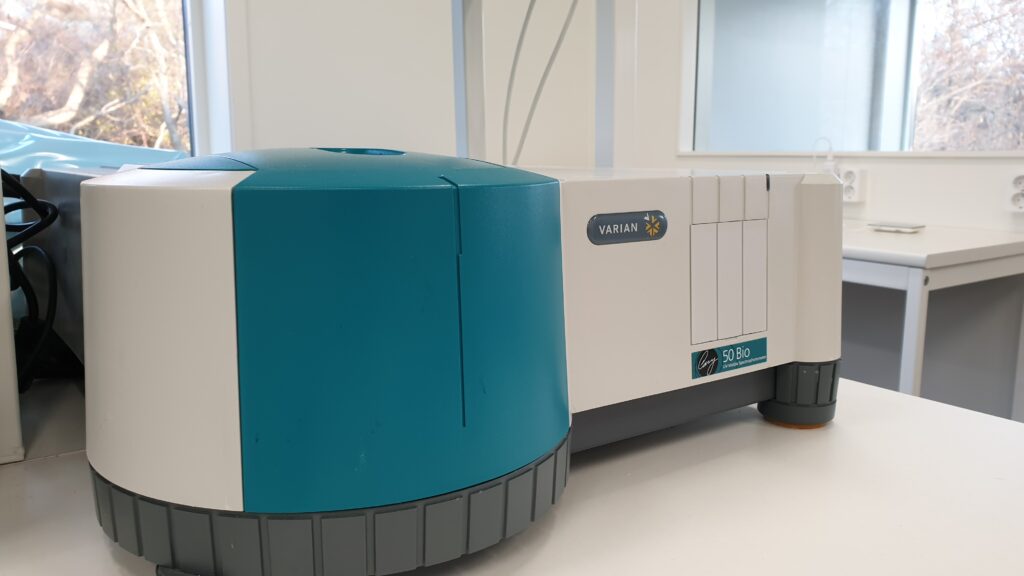
Spectrophotometer Varian Cary 50 Bio. A routine instrument for absorbance in the UV-VIS region.
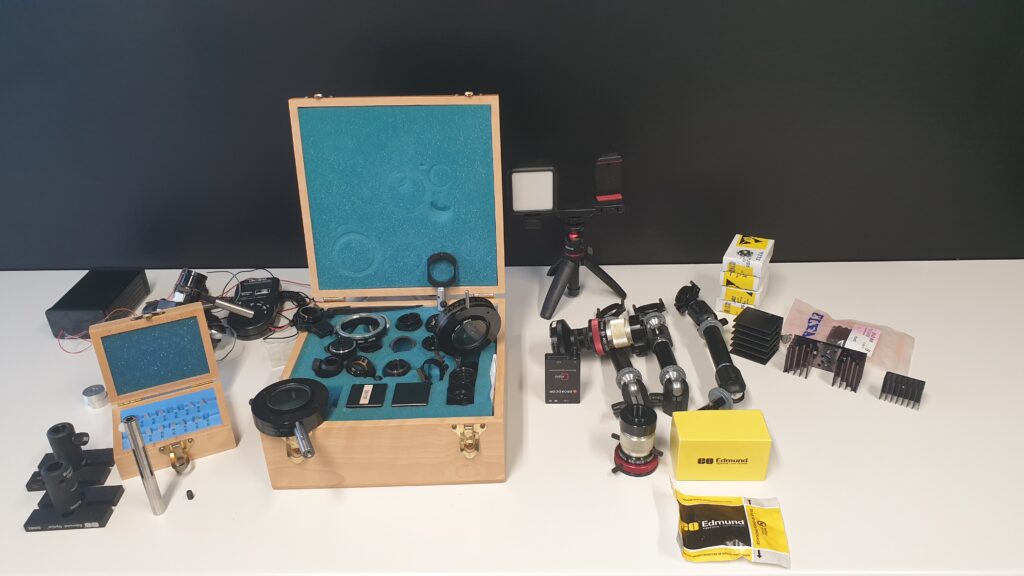
Modular optics, high effect LEDs, lenses of various focal lengths, optical fibers, beamsplitters, band pass filters, mounting systems for optical components, polarizers, spectrometers, cooling fins and customized LED control electronics. These are examples of modular components we use to quickly build custom solutions according to either in-house or customer requirements.
We can build specialized optical systems from scratch in our lab to solve the problems we or our customers encounter. Prototyping and experimenting is easily done on our optics tables and sometimes a more permanent form must be built, such as the automated hyperspectral imaging system for monitoring multiple samples below. The system employs infinity-corrected optics and the components are also part of the robot for chemical and microbiological monitoring (Ebbot).
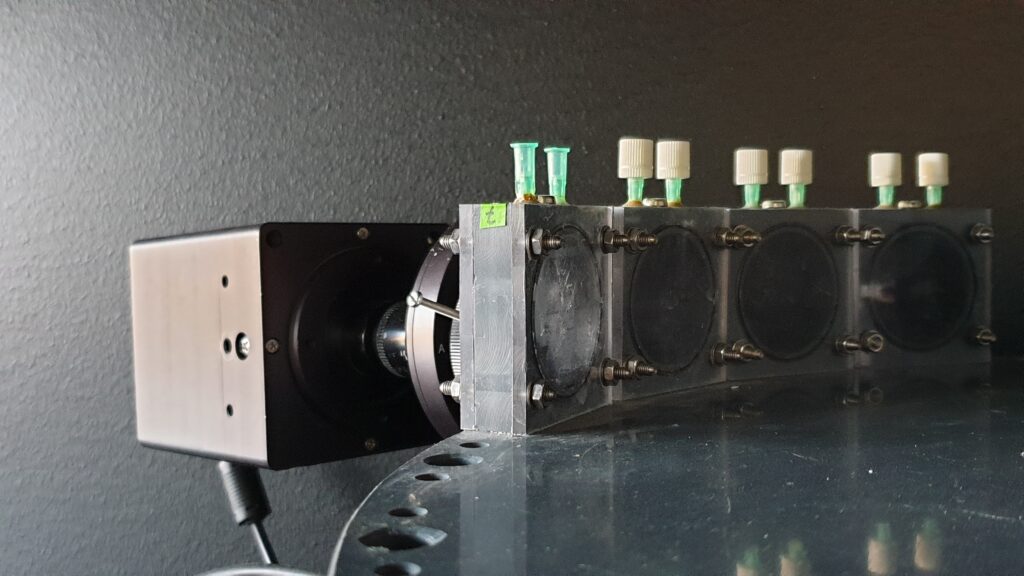
Hyperspectral imaging system (cooled CCD) with up to 24 sample cells. Designed by researchers at Industridoktorn. The system has acquired data for several scientific publications and for example shown how plants take up nutrients from the soil. See Photonics article for more info.
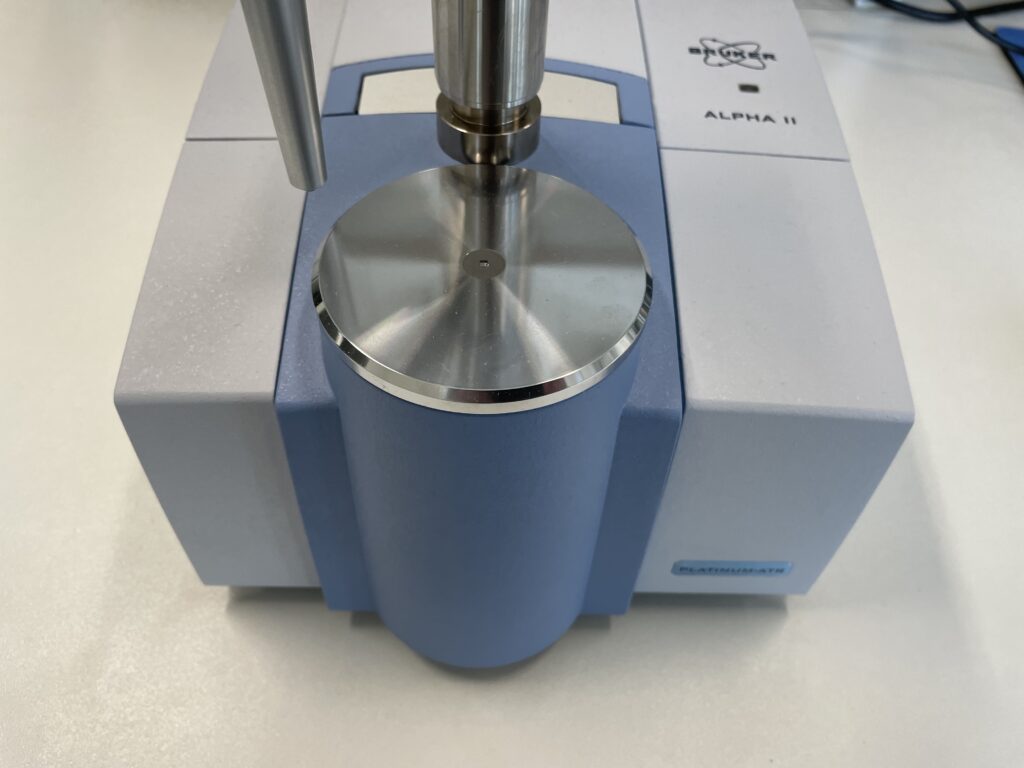
FTIR system Bruker Alpha II with diamond ATR, diffuse reflectance and transmission cell was installed in March 2022. The system can be used to elicit structural and chemical information from unknown materials, such as deposits. It is also used to study reactions, such as polymerization or degradation. Additional modules are available for various purposes as can be seen in the above image. The system is extremely compact, the footprint is about the size of an A4 page, and also shock resistant, which allows us to bring it to the field or to customer sites to quickly help them with any problem in their processes or production.
Portable Raman spectrometer. A Raman spectrometer can give similar information about a material or sample as FTIR, but has some unique advantages which make it a great complement to the FTIR spectrometer. While FTIR is mainly an absorbance technique, Raman spectroscopy is based on a scattering effect, thus the information that can be gathered about a samples vibrational structure is similar but not exactly the same.
Chromatography
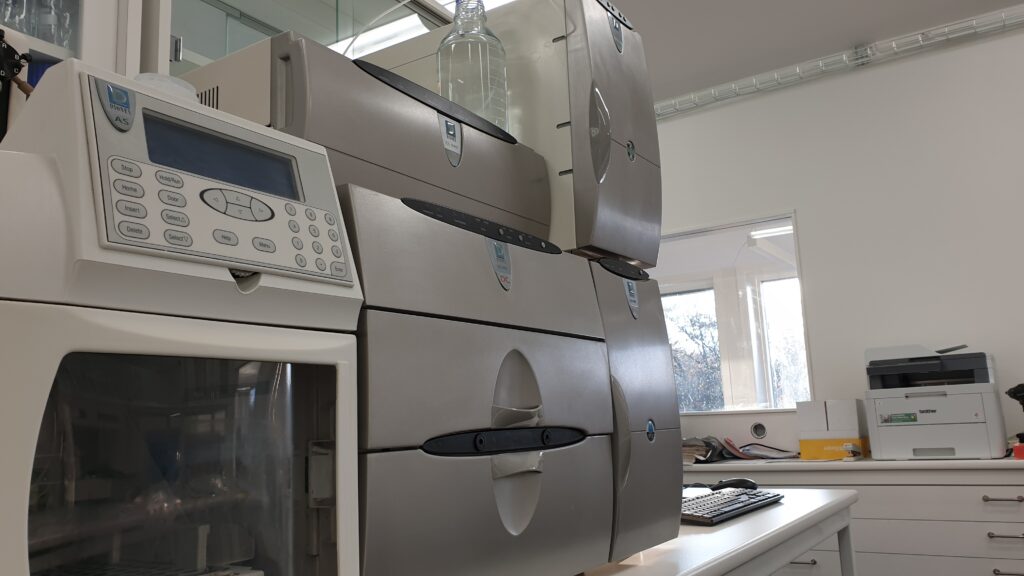
Ion chromatograph Dionex ICS-3000 (Thermo).
This ion chromatograph is a highly flexible research system to determine compounds which dissolve in water, such as salts (anions, cations), alcohols, organic acids, sugars and sugar alcohols. The instrument is equipped with a sample preparation robot in the autosampler and dual isocratic separation channels, post column reaction coils, switching valves, detectors for conductivity and absorbance, with the possibility to add pulsed amperometric detection (PAD). The software controlling the instrument is the latest Chromeleon (7.3), which also allows configuring of third party add-ons. Top Notch!
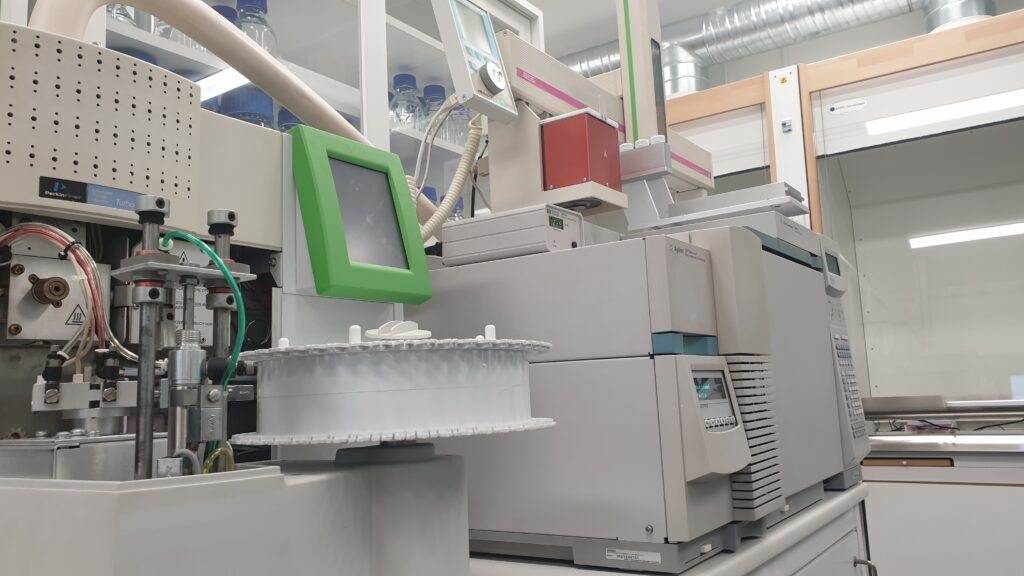
Gas chromatograph with mass spectrometer, Agilent 6890/5973 GCMS with additional automated thermal desorption equipment (ATD) for analyzing odors and other contaminations in air/gases, and CTC-autosampler for sample processing, headspace extraction and liquid injections. This is an instrument which can be used to both identify and quantify unkown compounds in air/gases, liquids (both water and oils/solvents) and solid materials.
Typical problems where this equipment is used is suspected contamination of products, process fluids, air/gases, off-taste, off-flavour or odors, purity of liquid products etc. The instrument is the core of a modern development and problem solving laboratory, as it is extremely flexible and general and thus can be used to explore a large variety of questions which arise. A “Swiss army knife” for the more difficult problems concerning for example odor. Additionally we modify and develop our own sampling equipment and test rigs for more comlex problems, such as degradation issues, fast chemical reactions and trace analyses.
Microbiology
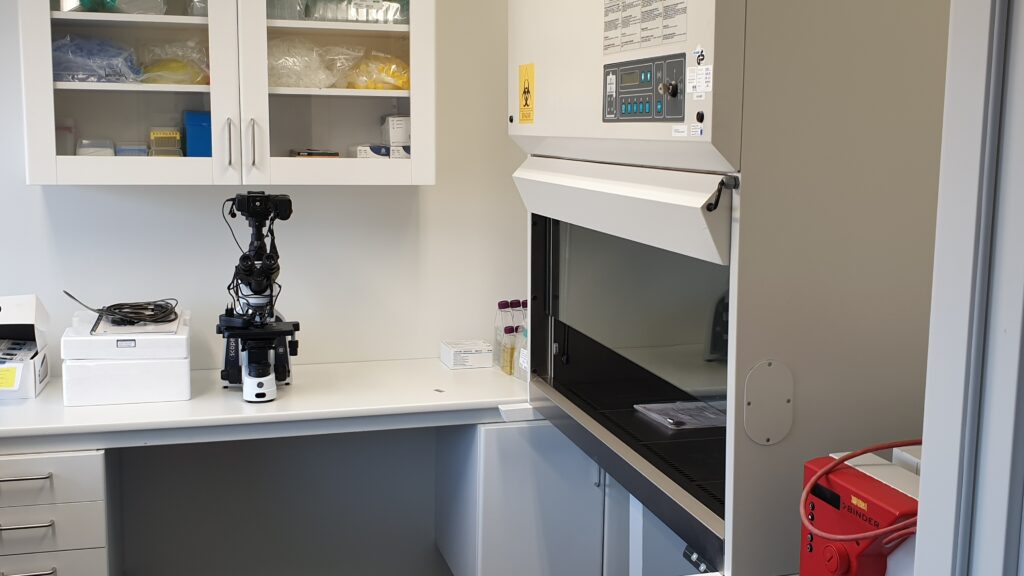
Fully equipped cleanroom for microbiology with dedicated microscope, cell incubator, cell counter and sterile consumables. Air supply into the room is HEPA-filtered (not only the laminar flow bench). The lab is approved for work with organisms in risk class II. Read more about cleanroom work here.
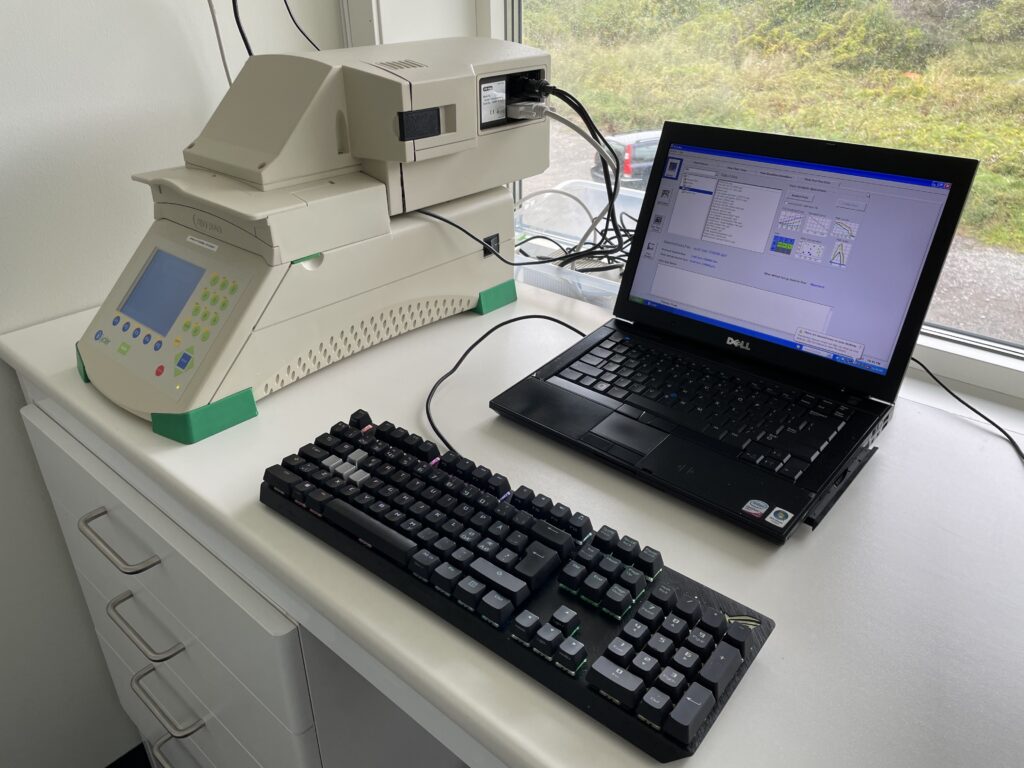
Biorad qPCR-system with 4 wavelengths for detection of viruses and bacteria. It is used as reference system for development of automated virus and bacteria monitoring systems in a research project funded by Vinnova. The system is also used for classification of contaminating organisms which has caused problems, for example clogging, in samples. Read more here.
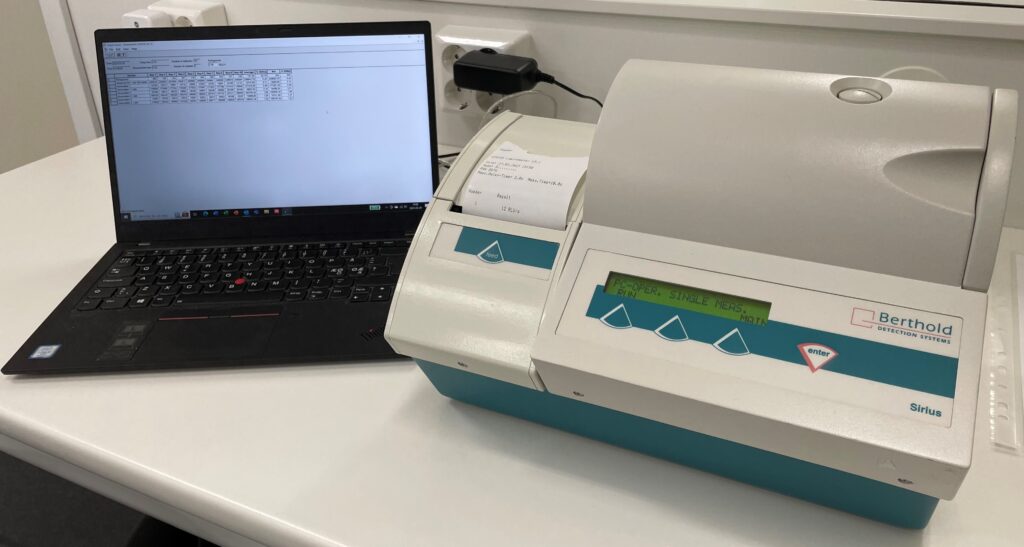
Luminometer Sirius FB12 for measurement of adenosintriphosphate (ATP), an energy carrier in living cells, which is used as an indirect measure of biological activity or the number of organisms in biological samples, for example water. The instrument is extremely sensitive and has a detection limit of 0.9 attomoles of ATP, which corresponds to the amount present in single bacterial cells. In the field or at remote sites the instrument can be used standalone with a printer or connected to a PC in the laboratory. Read more about the technique here.
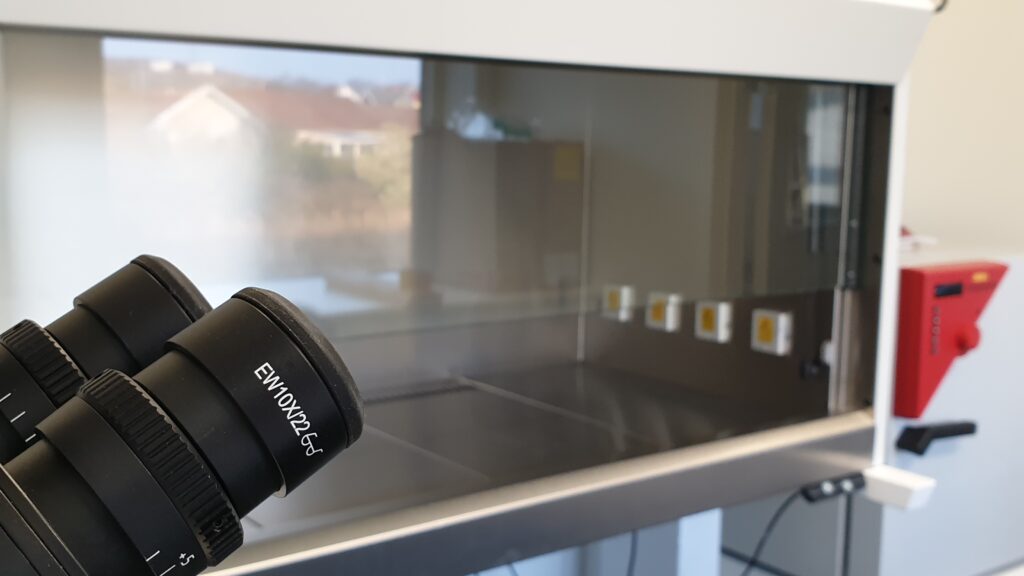
Laminar flow bench (LAF) for safe handling of microbiological samples.
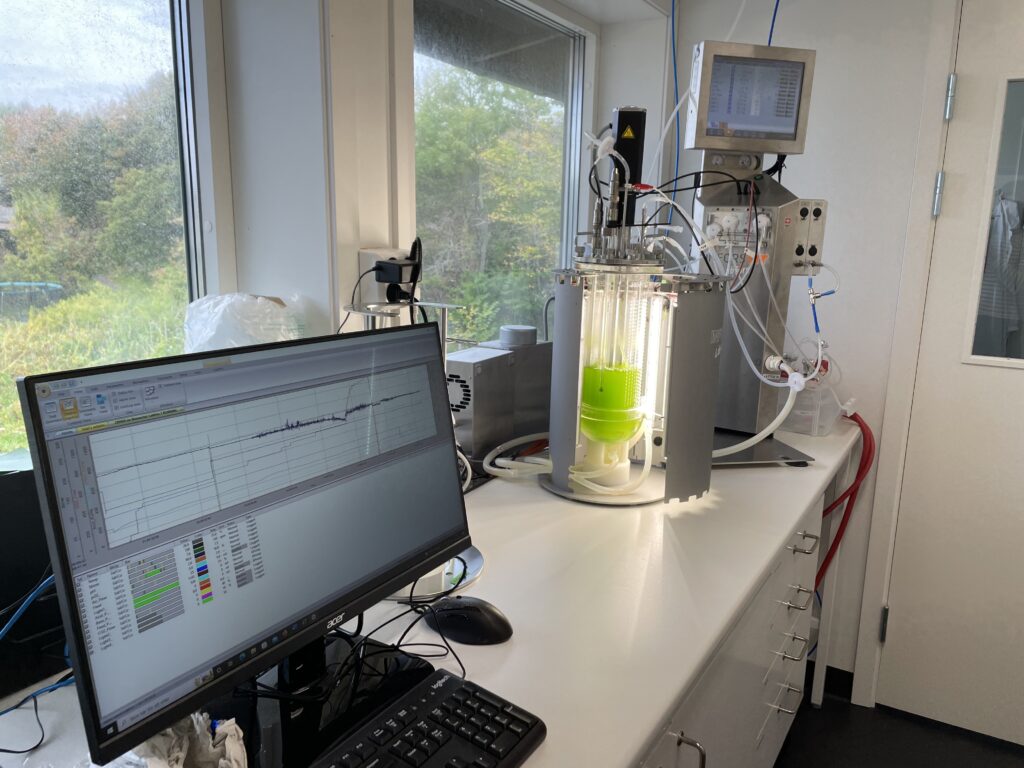
Labfors 4 lux; Infors HT is a commercial photobioreactor for cultivation of phototrofic microorganismas, for example cultivation of microalgae and cyanobacteria. The system is equipped with air and carbon dioxide mixing systems for gas supply, both LED and fluorescent tube options for illumination, sensors for dissolved oxygen and pH as well as pumps for pH control and, for example, addition of nutrients. Read more here.
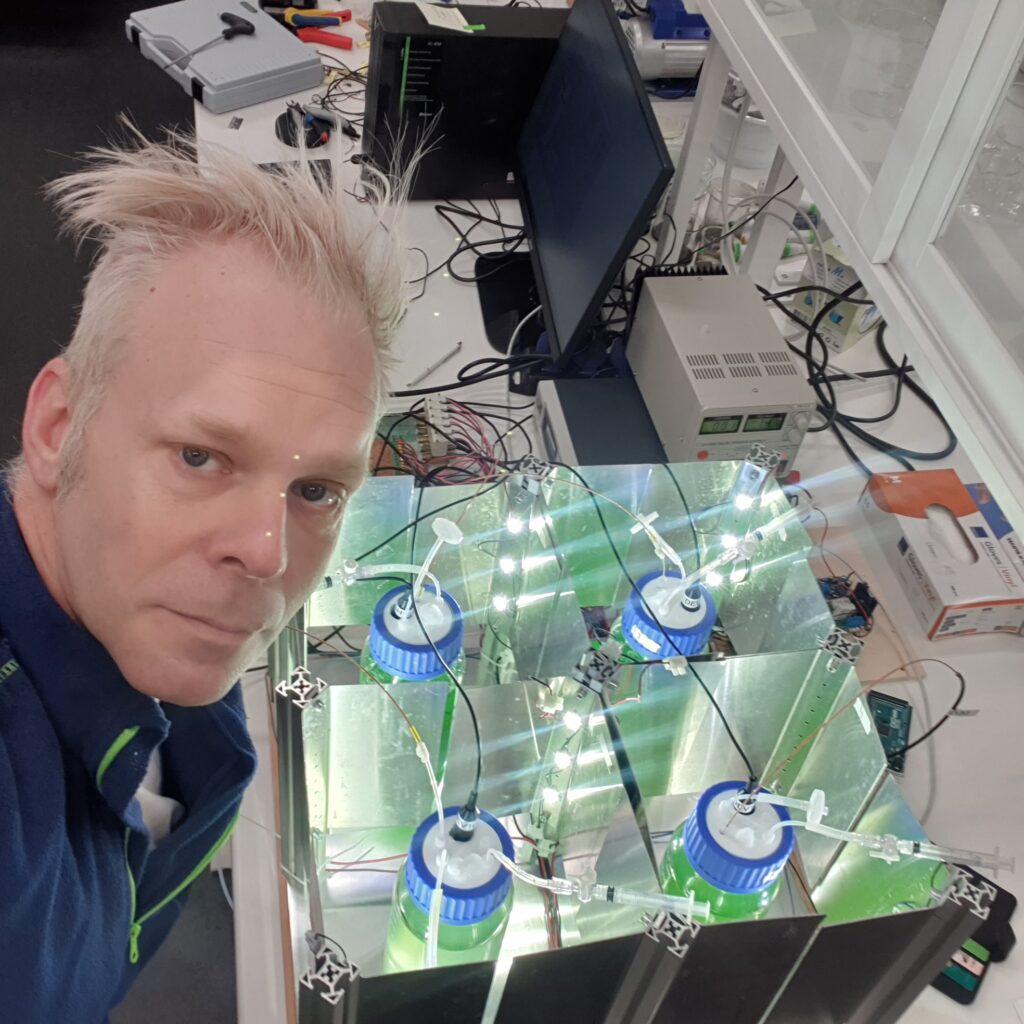
Modular multiplexed photobioreactor system for cultivation of microalgae in air, air/CO2 flue gas mixtures etc. In the picture a module of four reactors is used and at the moment it can be expanded up to 12 reactors. Sunlight can be simulated with high resolution in both time and intensity, and with minor modifications spectral profile can also be adjusted (current configuration is for maximum intensity). The daylight intensity profiles are easily adjusted in the control software to match location on earth and season to be simulated (or if one wishes one could simulate conditions in orbit or on Mars for example, except gravity).
The system is designed to simulate industrial cultivation and each reactor is individually pH controlled through the gas flow. Growing algae deplete CO2 and raise pH in the culture and CO2 is supplied to the cultures as a gas flow to compensate. This process has been suggested as a way to reduce CO2 emissions from industrial sources while providing biomass (CCU) for production of raw materials, chemicals or fuels.
The gas supply can either be pure gases (typically air/CO2), simulated flue gas (mix of typically O2, N2, CO2, NOx, SOx etc.), or, for example, compressed flue gas from a factory. The system was developed and built from scratch by researchers at Industridoktorn, including electronics and control software and has been used in several research projects. It is constantly modified and extended with new functions as needed.
Durability, shelf life, cell incubation
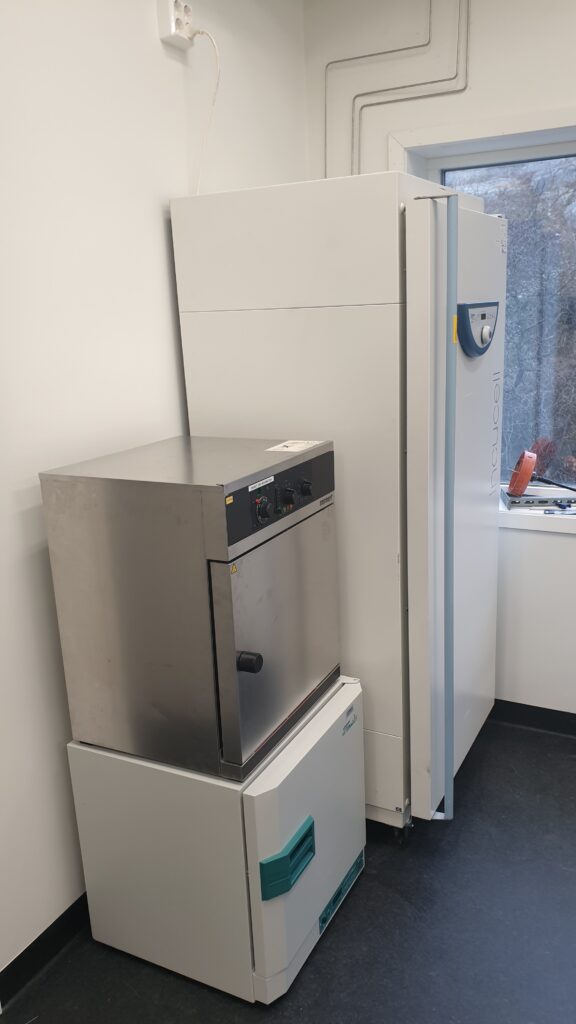
Ovens and incubators are available in several sizes up to 400L for aging of samples or incubation in various projects. These have a high temperature accuracy, which is necessary to accurately determine shelf life of a product, environmental durability or sustainability. The close proximity to the analytical laboratory allows identification and quantification of degradation products formed and possibly also how to avoid or accelerate degradation.
Robots
The robots are only available through Industridoktorn assignments.
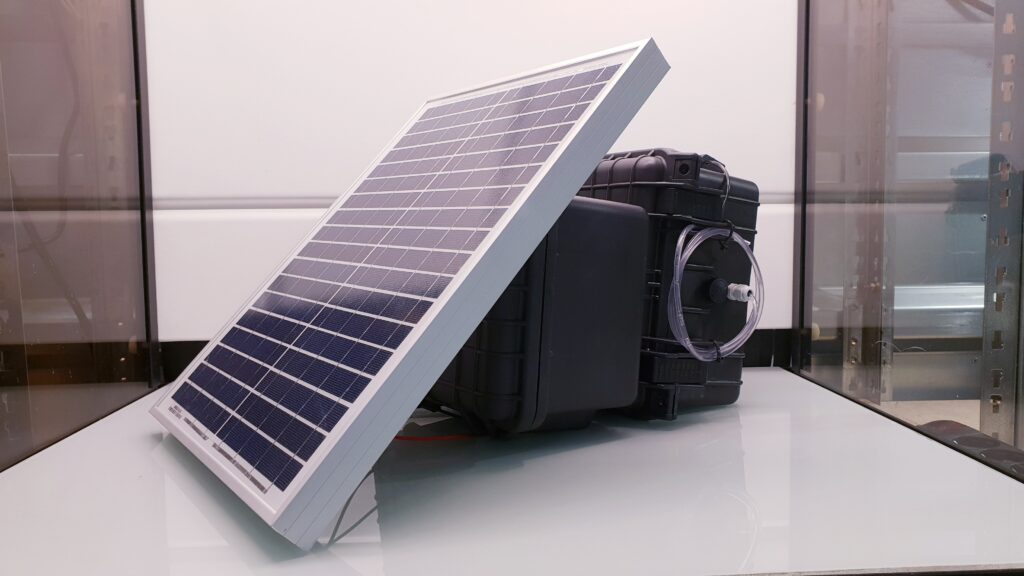
Ebbot is the first system for chemical monitoring which has been tested in the laboratory as well in the field. It is controlled from a smartphone or computer and is self-sufficient with regard to electricity and designed for rough environments. For more information about our robots, read here and visit http://www.stromtech.se.

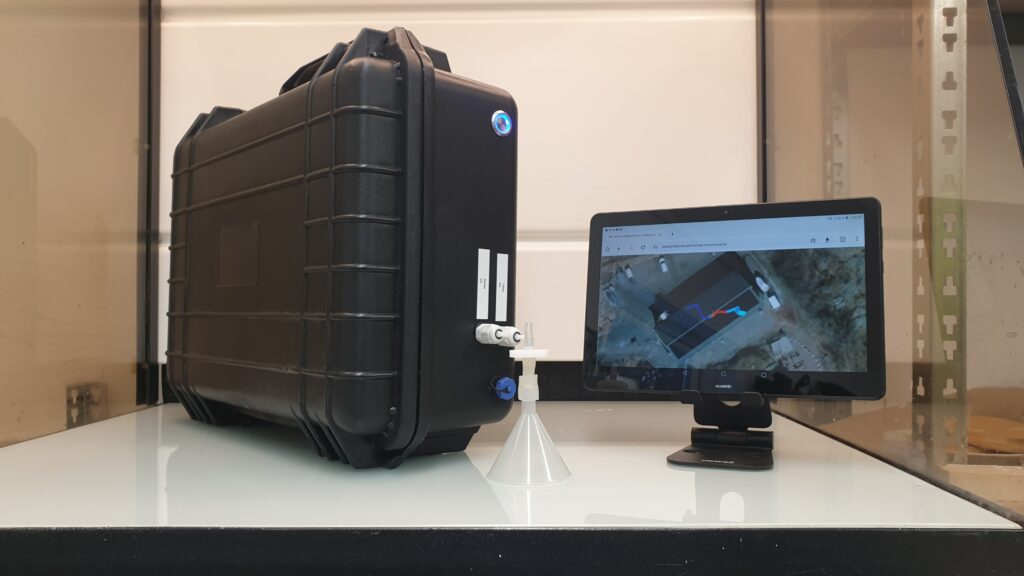
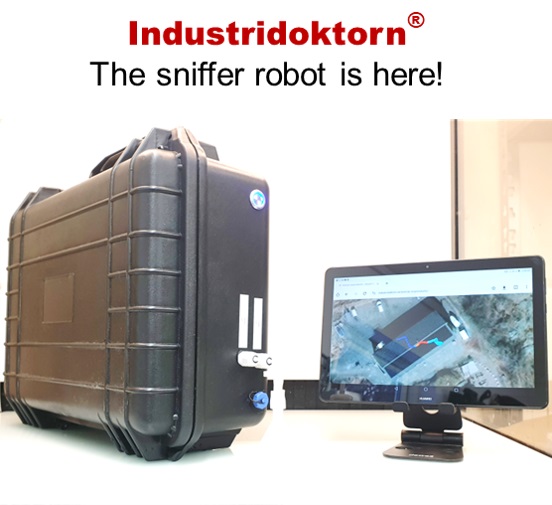
Additional equipment
The laboratory is also well supplied with general chemistry and microbiology equipment, such as glassware, extraction equipment, analytical balances, gas supply and flow controls, pH, temperature, conductivity meters etc.
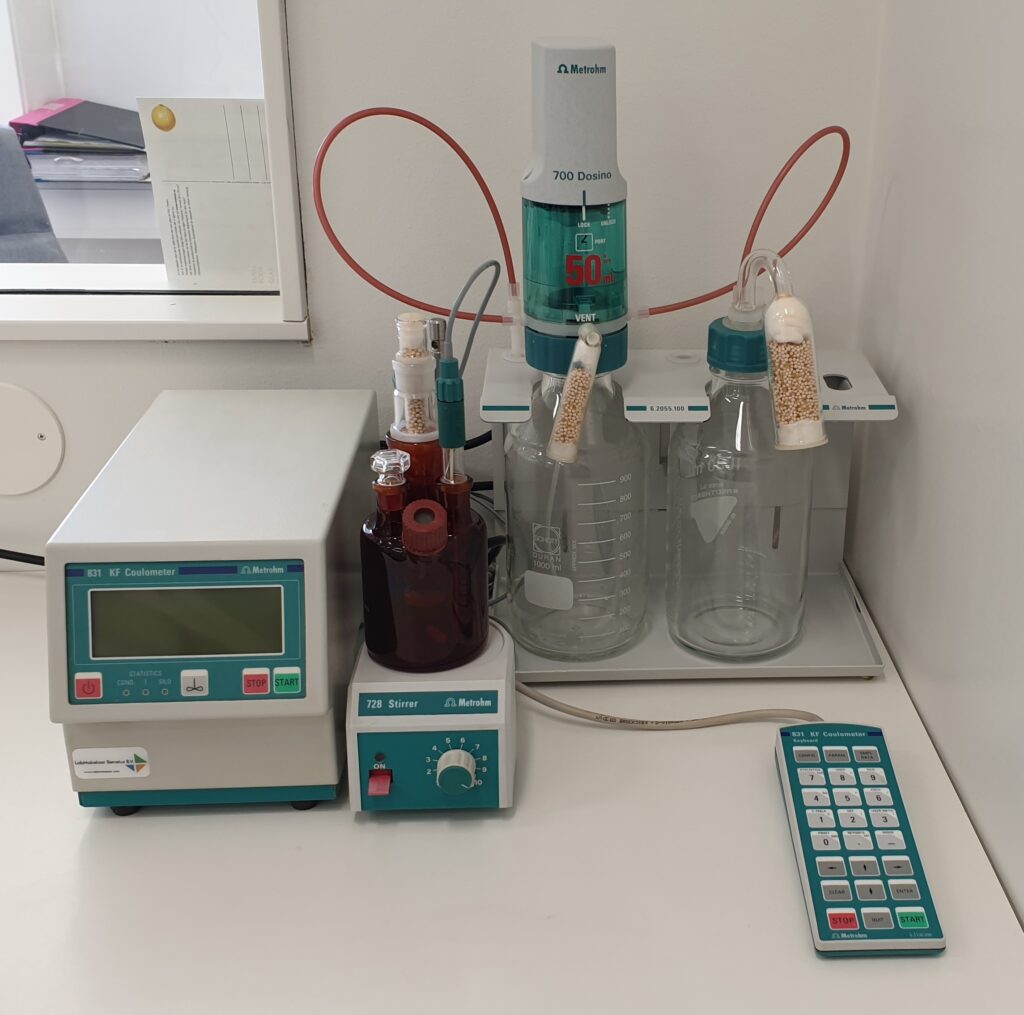
Coulometer for Karl Fischer titration of samples is used to determine very low contents (less than 1 %) of moisture or water.
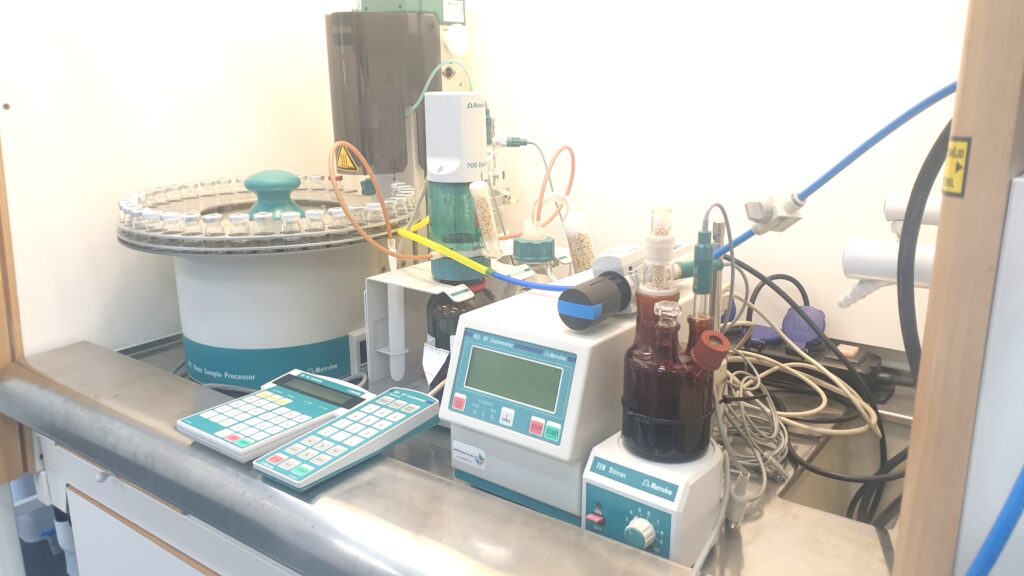
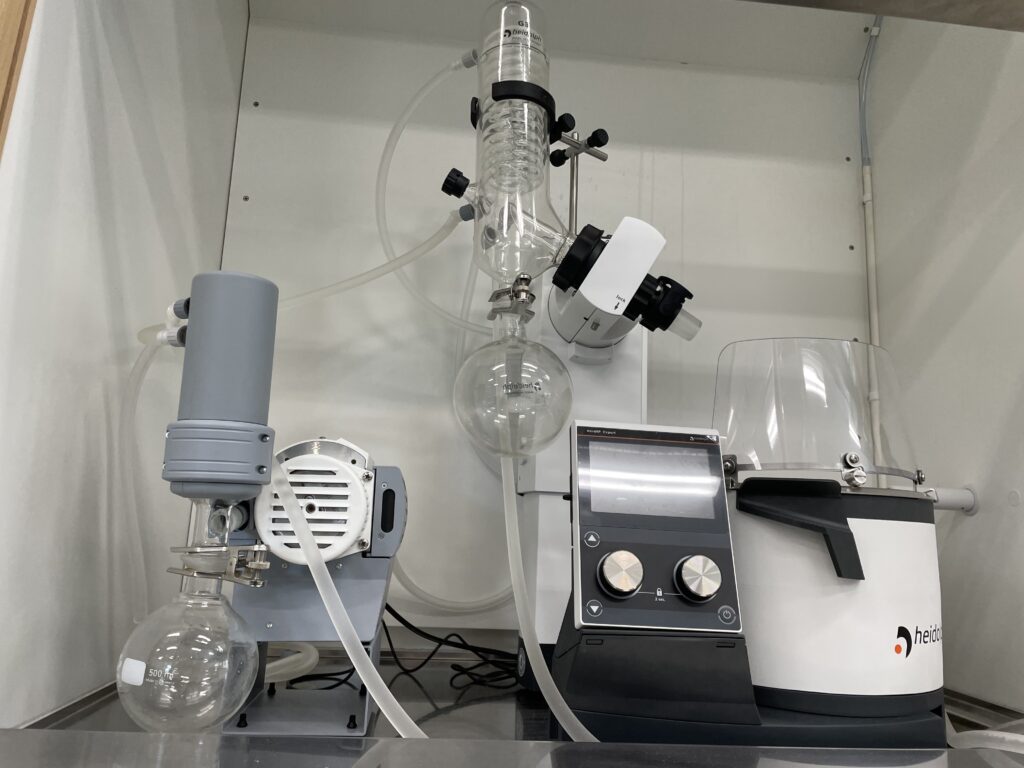
Evaporation equipment for concentration of fluids using adjustable fluid temperature, cooling water and low pressure.
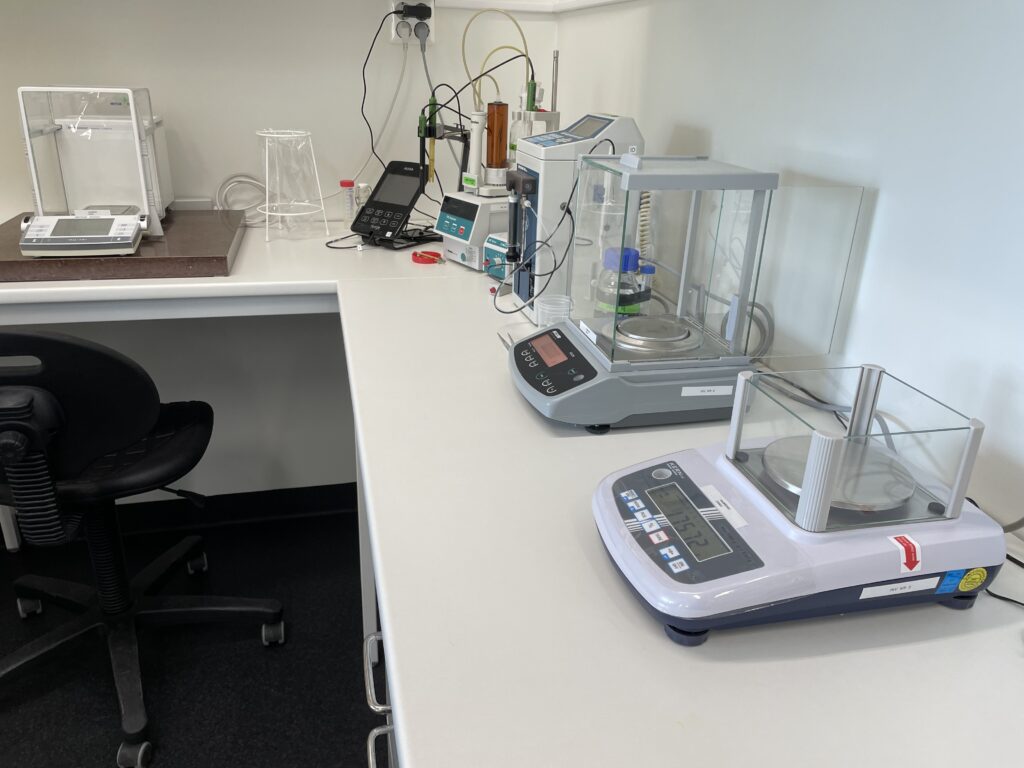
Our analytical scales with accuracy up to 5 decimals (0,01 mg or 0,00001 g)
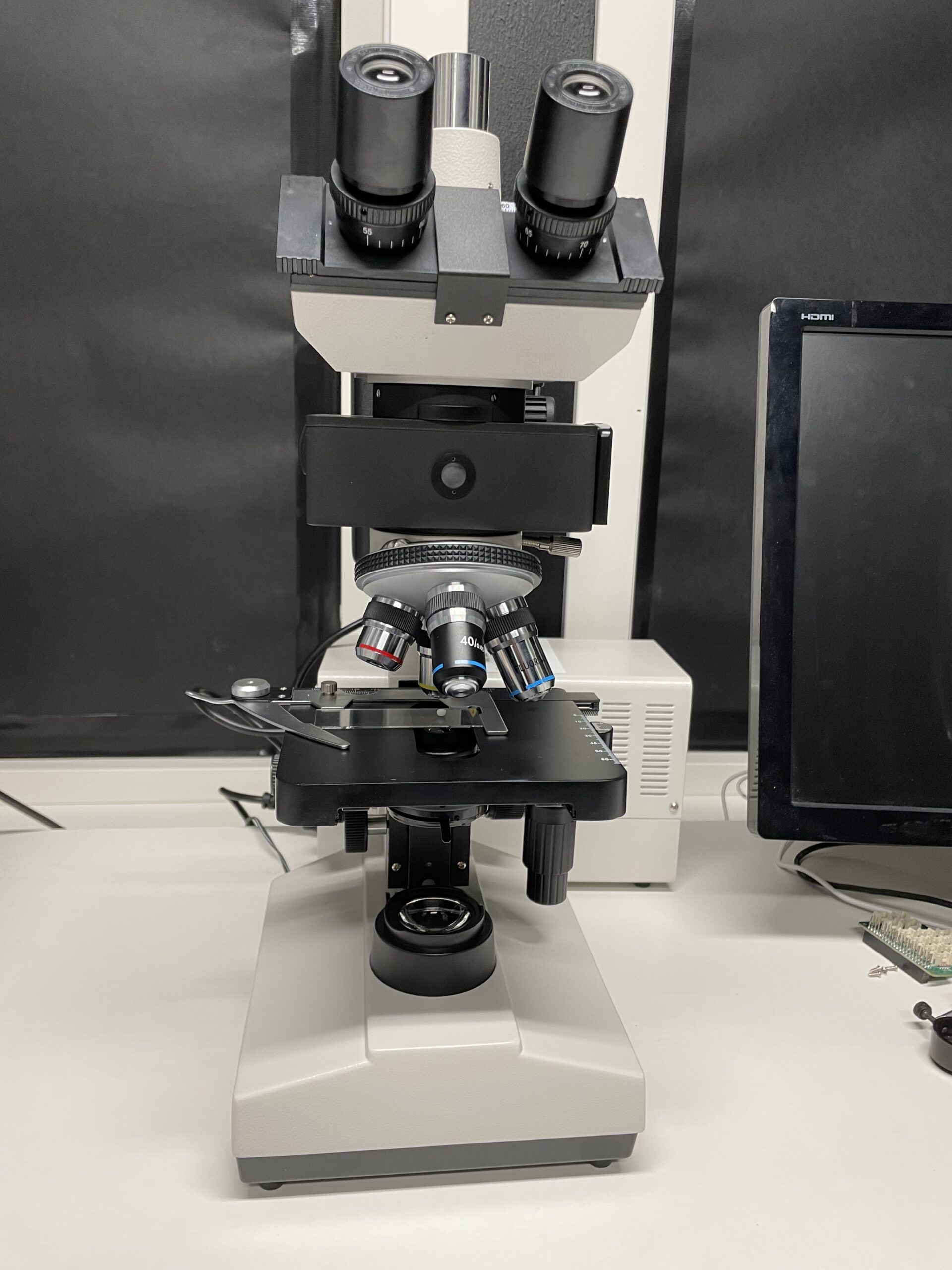
Epifluorescence microscope with blue and green filter and 4 – 40x objectives.
